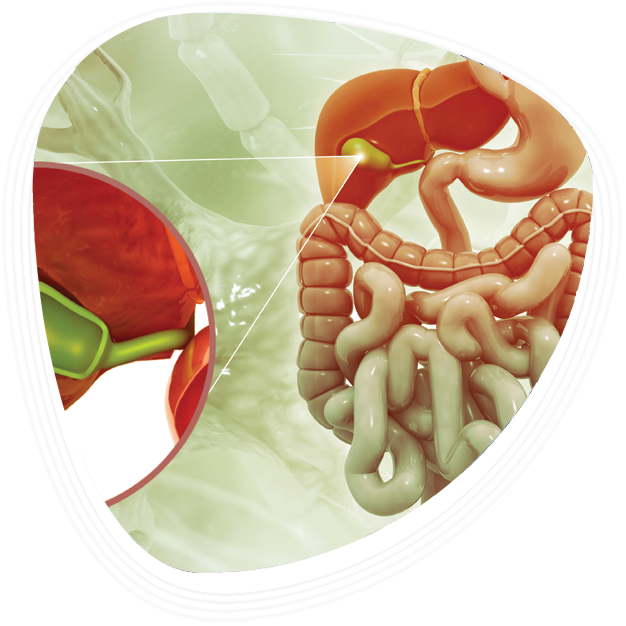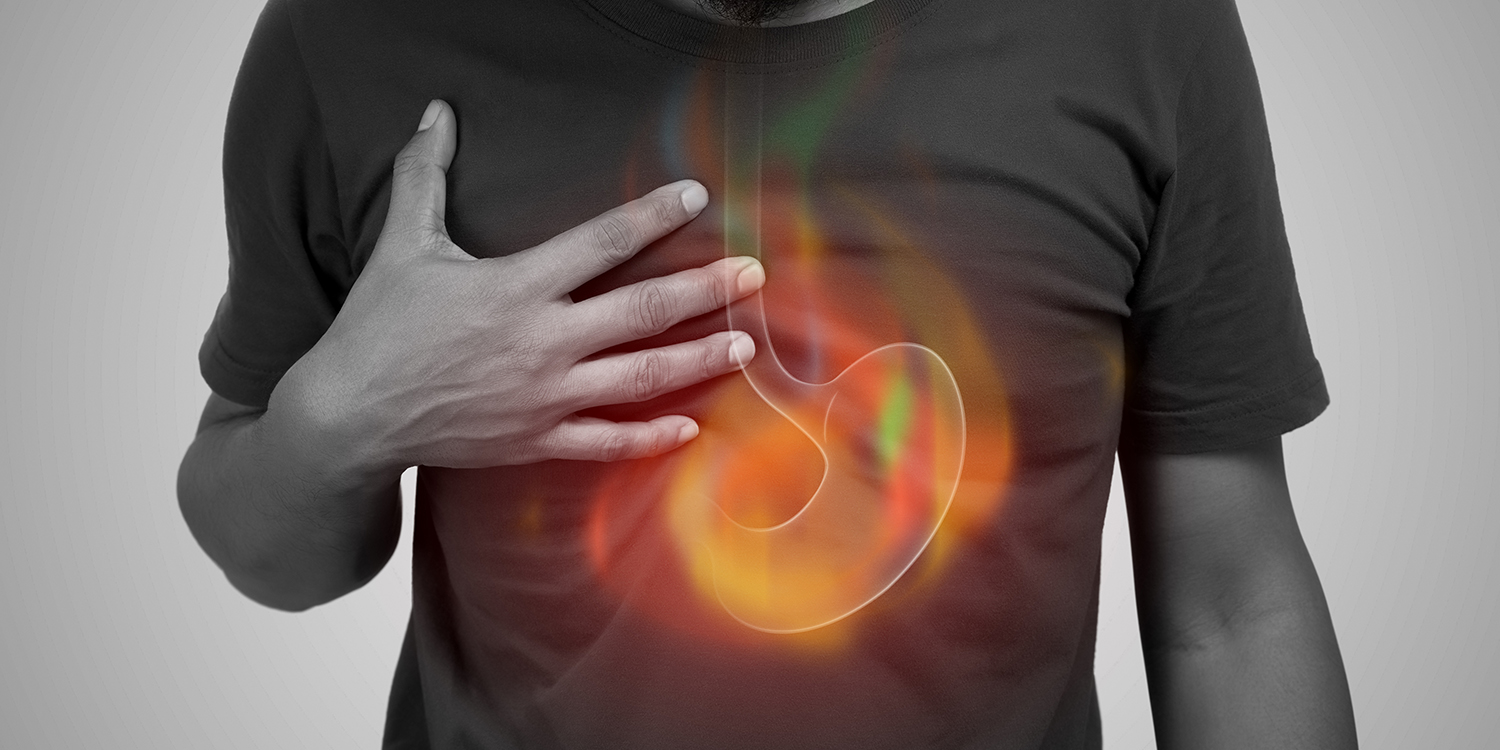Gallstones, or gallbladder stones, are solid deposits that form when substances in bile harden inside the gallbladder. These gallstones may remain symptomless for years or trigger sudden, sharp abdominal pain, nausea, and digestive discomfort when they obstruct the flow of bile from the gallbladder to the small intestine. At Graphic Era Hospital, Dehradun, our team of experienced gastroenterologists, hepatobiliary surgeons, and laparoscopic specialists provides comprehensive care for gallbladder stone management. Our experts use advanced imaging such as ultrasound and CT scans to detect stones accurately and offer both non-surgical and surgical treatments, including minimally invasive laparoscopic cholecystectomy. With a focus on safety, precision, and patient comfort, we ensure quick recovery, reduced complications, and long-term digestive health for every patient.
Understanding Gallbladder Stones (Cholelithiasis)
Gallbladder stones, medically known as cholelithiasis, form when substances such as cholesterol or bilirubin in bile solidify inside the gallbladder. The gallbladder stores and releases bile to aid digestion, particularly in breaking down fats. When bile composition changes or remains stagnant for too long, it can lead to crystal formation that gradually turns into stones.
These stones can range from tiny grains to larger masses that obstruct the bile ducts. While many people remain symptom-free, gallstones can cause pain, inflammation, or infection once they block the normal flow of bile. Understanding how and why they develop is the first step towards timely diagnosis and effective treatment.

Signs and Symptoms of Gallbladder Stones
Gallbladder stones may remain silent for years without causing any noticeable symptoms. However, when a stone blocks a bile duct, it can trigger sudden and severe pain or other digestive symptoms. These episodes, known as gallbladder attacks, often occur after consuming fatty or heavy meals. Common symptoms of gallbladder stones include:
- Sudden and rapidly intensifying pain in the upper right abdomen
- Sharp pain in the middle of the abdomen, just below the breastbone
- Pain that radiates to the back between the shoulder blades or to the right shoulder
- Nausea and vomiting during or after an attack
- Bloating or discomfort following meals
- Yellowing of the skin or eyes (jaundice) due to bile duct obstruction
- Fever and chills, which may suggest gallbladder infection (cholecystitis)
- Dark urine and pale stools caused by restricted bile flow
Causes and Risk Factors for Gallbladder Stones
Gallbladder stones develop when the chemical balance of bile is disturbed, causing some components to harden into crystals. Over time, these crystals can grow into stones. Several biological and lifestyle factors contribute to this imbalance. Common causes and risk factors include:
- Too much cholesterol in the bile, which hardens into crystals and forms stones
- High bilirubin levels caused by liver problems, bile duct infections, or certain blood conditions
- The gallbladder doesn’t empty fully or often enough, making bile thick and concentrated
- Being overweight or losing weight too quickly can upset cholesterol balance
- Eating a diet high in fat and low in fibre, especially with processed foods
- Hormonal changes during pregnancyor from birth control pills
- Liver problems such as cirrhosis that affect how bile is made
- Family history of gallstones or past gallbladder issues
- Health conditions like diabetes that change the way bile and cholesterol work in the body
Diagnosis of Gallbladder Stones
Accurate diagnosis plays a key role in planning effective gallbladder stone treatment. Doctors at Graphic Era Hospital use advanced imaging and laboratory tests to confirm the presence, size, and location of stones, as well as to assess any associated complications such as infection or bile duct blockage. Common diagnostic tests for gallbladder stones include:
- Abdominal Ultrasound: The most common and reliable test to detect gallstones and inflammation.
- CT Scan: Helps identify stones in the bile ducts or surrounding organs.
- MRCP (Magnetic Resonance Cholangiopancreatography): Provides detailed images of bile ducts and the gallbladder without the need for contrast dyes.
- Liver Function Tests (LFTs): Evaluate bile flow and liver health in cases of obstruction.
- Endoscopic Ultrasound (EUS): Combines endoscopy and ultrasound for a closer view of bile ducts when other imaging results are unclear.
Treatment Options for Gallbladder Stones
The treatment for gallbladder stones depends on the size, number, and symptoms of the stones. At Graphic Era Hospital, specialists evaluate each patient carefully to determine whether medication, lifestyle changes, or surgery offers the most effective relief. The goal is to remove the stones, prevent recurrence, and restore healthy bile flow.
Common treatment options include:
- Watchful Waiting: For small, symptom-free stones that do not affect bile flow, doctors may recommend regular monitoring.
- Medication: Certain bile acid medicines can dissolve cholesterol stones, although they are suitable only for specific cases.
- Dietary Management: Adopting a low-fat, high-fibre diet helps reduce gallstone formation and digestive discomfort.
- Laparoscopic Cholecystectomy: A minimally invasive surgery to remove the gallbladder and prevent stone recurrence; it offers faster recovery and minimal scarring.
- Open Cholecystectomy: Recommended for complex cases or when laparoscopic surgery is not feasible.
- Endoscopic Retrograde Cholangiopancreatography (ERCP): Used to remove stones lodged in the bile duct without removing the gallbladder.
- Pain Management and Supportive Care: For patients unfit for surgery, non-surgical management helps control symptoms and prevent infection.
Why Choose Graphic Era Hospital for Gallbladder Stone Treatment?
At Graphic Era Hospital, we understand that gallbladder stone pain can disrupt your daily life and overall well-being. Our focus is to provide precise, safe, and compassionate care that not only removes the stones but also restores long-term digestive health. Here’s what makes our gallbladder stone treatment care stand out:

What are the Possible Complications of Having Gallstones?
If gallstones remain untreated, they can block the bile ducts or cause inflammation and infection, leading to serious health problems. Recognising these potential complications early allows timely medical or surgical intervention and helps prevent long-term damage. Possible complications of gallstones include:
- Acute Cholecystitis: Inflammation of the gallbladder causing severe pain, fever, and tenderness.
- Bile Duct Obstruction: Stones can block bile flow, leading to jaundice and liver damage.
- Pancreatitis: Inflammation of the pancreas when stones obstruct the pancreatic duct.
- Gallbladder Gangrene or Perforation: A rare but life-threatening condition resulting from reduced blood supply or infection.
- Cholangitis: Infection of the bile ducts causing fever, abdominal pain, and jaundice.
- Gallbladder Cancer: Chronic irritation due to long-standing gallstones may increase cancer risk in rare cases.
Top Gallbladder Stone Treatments at Graphic Era Hospital
- Laparoscopic Cholecystectomy
- Endoscopic Retrograde Cholangiopancreatography (ERCP)
- Open Gallbladder Surgery
- Bile Duct Exploration
- Comprehensive Pain and Infection Management
Top Procedures
- Peroral endoscopic myotomy (POEM)
- EUS-guided Hepaticogastrostomy (EUS-HGS)
- Endoscopic Mucosal Resection (EMR)
- EUS-Guided Gastrojejunostomy
- Endoscopic Submucosal Dissection (ESD)
- Lumen-Apposing Metal Stent (LAMS)
- Full-Thickness Resection Device (FTRD) Procedures
- EUS-Guided Gastric Coil Embolization
- EUS-Guided Antegrade Stenting (EUS-AGS)
- EUS-guided Choledochoduodenostomy (EUS-CDS)
- Metal Stent Placement
- Laparoscopic Cholecystectomy
- Z-POEM (Peroral Endoscopic Myotomy)
- Gallbladder Cancer Surgery (Laparoscopic & Open)
- Gastric Cancer Surgery (Gastrectomy)
- Laparoscopic Sleeve Gastrectomy
- Gastric Bypass Surgery
- Laparoscopic Appendectomy
- Laparoscopic Splenectomy
- Splenorenal Shunt Surgery
Blog
Frequently Asked Questions
What are the common symptoms of gallbladder stones?
Gallbladder stones often cause sudden pain in the upper abdomen, nausea, vomiting, bloating, or indigestion. Some patients may also experience fever or jaundice if a bile duct becomes blocked.
Can gallbladder stones be treated without surgery?
Small, cholesterol-based stones may dissolve with medication, but this method takes time and may not prevent recurrence. Most patients benefit from laparoscopic surgery, which safely removes the gallbladder and prevents future stone formation.
How is gallbladder stone surgery performed at Graphic Era Hospital in Dehradun?
Surgeons at Graphic Era Hospital use laparoscopic cholecystectomy, a minimally invasive procedure performed through small incisions. It ensures faster recovery, less pain, and minimal scarring compared to open surgery.
How long does it take to recover after gallbladder stone removal?
Most patients recover within one to two weeks after laparoscopic gallbladder removal. Your surgeon will advise on dietary care and activity restrictions during the recovery period.
Can gallstones cause serious complications if left untreated?
Yes. Untreated gallstones can lead to infections, bile duct blockage, or inflammation of the pancreas and liver. Early diagnosis and timely treatment help prevent these complications.
How can I book an appointment for gallbladder stone treatment at Graphic Era Hospital?
You can call 1800-889-7351 to schedule a consultation with our specialists or visit Graphic Era Hospital, Dehradun, for expert evaluation and treatment guidance.





